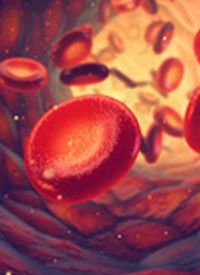Article
TBI Followed by GVHD Prophylaxis Decreases the Incidence of GVHD in Hematologic Malignancies
Author(s):
Myeloablative transplantation with a total body irradiation regimen followed by a graft-versus-host disease prophylaxis regimen led to a low occurrence of GVHD in adult and pediatric patients with hematologic malignancies.

Myeloablative transplantation with a total body irradiation (TBI) regimen followed by a graft-versus-host disease (GVHD) prophylaxis regimen led to a low occurrence of GVHD in adult and pediatric patients with hematologic malignancies, according to data presented at the 2022 Transplantation & Cellular Therapy Meetings.
In the phase 2 trial, 63 patients were treated with TBI or busulfan (Busuflex) followed by a GVHD prophylaxis regimen of post-transplant cyclophosphamide (PTCy), tacrolimus, and mycophenolate mofetil (MMF) following allogeneic hematopoietic cell transplantation (HCT). The primary end point was cumulative incidence of chronic GVHD requiring systemic immunosuppressive treatment at 1 year after transplant.
At 1 year of follow-up, only 2 patients (0.031%) developed chronic GVHD requiring immune suppression; 1 patient in the MRD group and 1 patient in the MUD group, both of whom received peripheral blood stem cell graft.
Following HCT, investigators employed a myeloablative conditioning regimen of TBI at a total dose of 1320 cGy administered twice daily from days -4 to -1. Patients who were unable to receive further radiation received busulfan 3.2 mg/kg daily for a cumulative area under the concentration time curve of 19,000 to 21,000 µmol/min/L plus fludarabine 160 mg/m2 on days -5 to -2. Patients then underwent a GVHD prophylaxis regimen consisting of PTCy (50 mg/kg on days 3 and 4), tacrolimus (beginning at day 5), and MMF (beginning at day 5).
Most patients in the analysis were males (52%) and were over the age of 18 (83%). The median age of patients included in the analysis was 36 (range, 2-55) and the median follow up was 502 days post-HCT.
Patients had a comorbidity by the HCT-comorbidity index of low, intermediate, or high at a rate of 46%, 37%, and 17%, respectively. The most common diagnoses included acute lymphoblastic leukemia (38%), acute myeloid leukemia (35%), and myelodysplastic syndromes (11%).
All 63 patients achieved primary neutrophil engraftment by 42 days, with a median of 16 days (range, 13-27). Almost all patients (94%) experienced platelet engraftment by 6 months, with a median of 25 days (range, 16-98). By day 100, 86% of patients had achieved full donor bone marrow chimerism and 95% had achieved full donor peripheral blood CD3 and CD33 chimerism (both defined as > 95% donor DNA).
Further results from the study showed that the overall cumulative incidence of grade 2-4 active GVHD by 100 days post-transplant was 14% overall (95% CI, 6%-23%), including 7% in the MRD group and 32% in the MUD group. The incidence of grade 3/4 acute GVHD was 5% (95% CI, 0%-10%) and was found to be similar in both the MRD and MUD arms.
The estimated 2-year overall survival rate was 79% (95% CI, 65%-88%), with a 75% rate in the MRD group and a 95% rate in the MUD group. The estimated 2-year GVHD-free relapse survival rate was 57% (95% CI, 42%-69%), 56% in the MRD group and 63%, in the MUD group.
The 2-year cumulative estimated incidence of relapse was 22% in the MRD arm and 16% in the MUD arm, for a total of 21% overall. Finally, the 2-year cumulative incidence of non-relapse mortality was 13% overall, with a 15% and 5% rate in the MRD and MUD groups, respectively.
In terms of safety, 66% of patients needed total parenteral nutrition for oral mucositis and regimen-related toxicities during their initial transplant admission.
Study authors concluded that the regimen was feasible and effective for both adult and pediatric patients. They also added that a further improvement in outcomes could be reached through incorporating post-transplant mitigating strategies with supportive care to combat the toxicities related to the regimen.
Reference
El Jurdi N, O’Leary D, He F, et al. Low incidence of chronic graft-versus-host disease in myeloablative allogeneic hematopoietic cell transplantation with post-transplant cyclophosphamide using matched related or unrelated donors: phase II study interim analysis. Presented at: 2022 Transplantation and Cellular Therapy Meetings; April 22-26, 2022; Salt Lake City, UT. Abstract 370.






%20(2)%201-Recovered-Recovered-Recovered-Recovered-Recovered.jpg?fit=crop&auto=format)

%20(2)%201-Recovered-Recovered-Recovered-Recovered-Recovered.jpg?fit=crop&auto=format)
%20(2)%201-Recovered-Recovered-Recovered-Recovered-Recovered.jpg?fit=crop&auto=format)